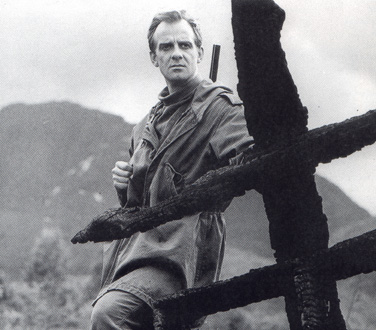

“We were three of us traveling down to Algeria, my brother Hjalmar, the photographer Tønsberg, and myself, all of us packed for summer holidays, furnished with passports and other suitable things. In an interview published in the Norwegian newspaper Morgenposten in 1945, Schwenzen talked about the adventure. Never before had a Norwegian film crew traveled so far. Probably the most daring idea for the film was the plan to shoot the epilogue on location in Algeria (the stand-in for the book’s original destination of India). Kommunernes Filmscentral (Norwegian Municipalities’ Film Central), primarily a corporation for the distribution of films, but for some years also credited as a production company, supported the project. In Pan, Schwenzen cast his own brother, actor Hjalmar Fries Schwenzen, as the male lead, and Harald himself played Glahn’s hunting companion in the film’s epilogue. For the rest of his career, he concentrated on acting, both for the stage and screen. The project apparently was a labor of love for Schwenzen-it was his first film as a director and he never made another.

The film was well-timed, as Hamsun had received the Nobel Prize for Literature in 1920 and was considered one of the country’s biggest heroes.Ī talented young actor from the National Theatre in Oslo, Harald Schwenzen, wrote the script and directed the film about the brooding, carnal, back-to-nature Lieutenant Thomas Glahn who takes refuge in Norway’s remote northern territories.

It was quite a sensation when someone suddenly had the nerve to go ahead with a film adaptation of Knut Hamsun’s famous 1894 novel Pan, already a national classic and widely appreciated abroad. It could hardly be considered a major industry at the time there were very few full-length movies being made annually and very few trained and experienced filmmakers working in Norway. Norwegian feature film production in the 1920s was infrequent.


 0 kommentar(er)
0 kommentar(er)
